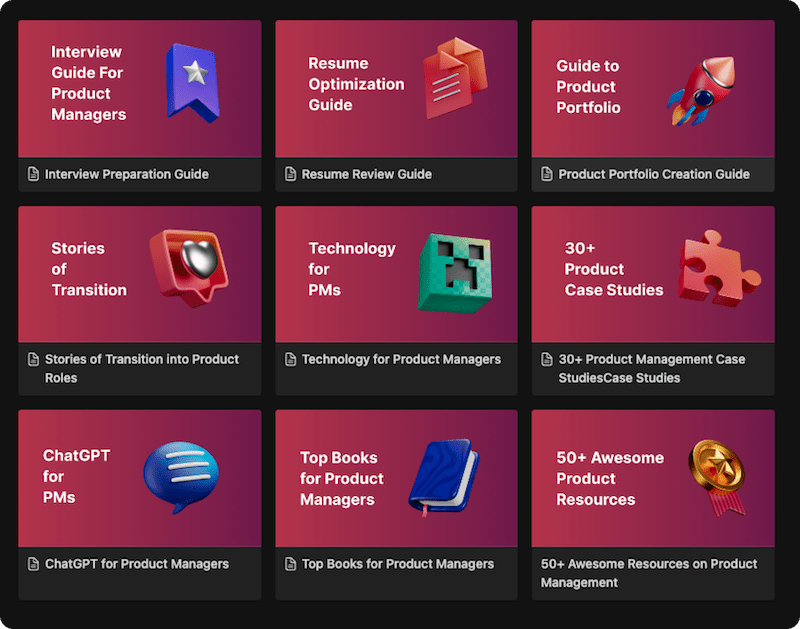Ever felt like you’re juggling a dozen different opinions on your product, all while trying to keep the train on the tracks? As a product manager, you’re not just managing a product; you’re managing people, expectations, and relationships. This complex dance is the art and science of stakeholder management. It’s a critical skill that can make the difference between a product that soars and one that never quite gets off the ground.
This guide is designed to be your go-to resource, taking you from a beginner’s understanding to a professional’s grasp of stakeholder management. We’ll break down the concepts into simple, actionable steps, provide real-world examples, and equip you with the tools you need to master this essential discipline. By the end of this article, you’ll feel confident in your ability to navigate the intricate web of stakeholder relationships and steer your product toward success.
Definition & Origin
The concept of stakeholder theory was first detailed by R. Edward Freeman in his 1984 book, “Strategic Management: A Stakeholder Approach.” Freeman proposed that businesses would be more successful if they focused on creating value for all of their stakeholders, not just shareholders. This idea has since become a cornerstone of modern business and project management.
Benefits & Use-Cases: Why Stakeholder Management Matters
Investing time and effort in stakeholder management yields significant returns. Here’s why it’s so crucial:
- Improved Project Success Rates: When stakeholders are properly engaged, they are more likely to support your project, leading to smoother execution and better outcomes.
- Proactive Risk Management: By understanding your stakeholders’ concerns, you can identify potential risks and obstacles early on and develop strategies to mitigate them.
- Clearer Communication & Expectations: A structured approach to stakeholder management ensures that everyone is on the same page, reducing misunderstandings and aligning expectations.
- Increased Resource Availability: Engaged and supportive stakeholders are more likely to provide the resources—be it time, money, or personnel—that your project needs to succeed.
- Enhanced Reputation & Trust: Transparent and consistent communication builds trust and strengthens your reputation as a reliable and effective product manager.
Who uses stakeholder management? The short answer is: everyone in a leadership or project-based role. This includes:
- Product Managers: To align product vision and roadmap with business goals and customer needs.
- Project Managers: To ensure projects are delivered on time and within budget, with the support of all involved parties.
- Business Leaders & Executives: To guide organizational strategy and ensure that business initiatives are supported across the company.
- Marketing & Sales Teams: To launch successful campaigns and products by understanding and engaging with customers and partners.
How It Works: A Step-by-Step Guide to Stakeholder Managemen
Here’s a practical, step-by-step guide to implementing a stakeholder management process:
Step 1: Identify Your Stakeholders
The first step is to figure out who your stakeholders are. You can’t manage them if you don’t know them! Brainstorm a list of everyone who is affected by your project, has influence over it, or has an interest in its success.
- Internal Stakeholders: These are people within your organization, such as your boss, executive sponsors, your development team, and colleagues from other departments like marketing, sales, and legal.
- External Stakeholders: These are individuals or groups outside your organization, including customers, users, suppliers, partners, government agencies, and the community.
Step 2: Analyze Your Stakeholders
Once you have your list, the next step is to analyze their influence and interest in your project. This will help you prioritize your efforts and tailor your communication. The most common tool for this is the Power/Interest Grid.
- High Power, High Interest (Manage Closely): These are your key players. You need to fully engage them and make the greatest efforts to satisfy them. Think executive sponsors or major customers.
- High Power, Low Interest (Keep Satisfied): These stakeholders have a lot of influence but aren’t interested in the day-to-day details. Keep them satisfied with regular, concise updates, but don’t overwhelm them with information.
- Low Power, High Interest (Keep Informed): These stakeholders are passionate about the project but have little direct power. Keep them informed and listen to their input; they can be valuable advocates.
- Low Power, Low Interest (Monitor): These stakeholders are the least critical. Monitor them, but don’t bother them with excessive communication.
Step 3: Develop Your Stakeholder Management Plan
Now that you’ve identified and analyzed your stakeholders, it’s time to create a plan. Your stakeholder management plan should outline how you will engage and communicate with each stakeholder or group. For each key stakeholder, consider:
- Their goals and motivations.
- Their level of engagement and influence.
- The key messages you need to convey.
- The best communication method and frequency.
Step 4: Engage Your Stakeholders
With your plan in place, it’s time to put it into action. Stakeholder engagement is an ongoing process of interacting with your stakeholders to keep them informed, solicit their feedback, and address their concerns. Remember that communication is a two-way street. It’s not just about pushing information out; it’s about listening and building relationships.
Step 5: Monitor and Adjust
Stakeholder needs and project dynamics can change over time. Regularly review your stakeholder management plan and adjust it as needed. Are your communication strategies working? Are your key stakeholders still supportive? Be flexible and willing to adapt your approach.
Mistakes to Avoid in Stakeholder Management
Even with the best intentions, it’s easy to make mistakes. Here are some common pitfalls to avoid:
- Failing to Identify All Stakeholders: Missing a key stakeholder can lead to roadblocks and resistance later on.
- Treating All Stakeholders the Same: A one-size-fits-all approach to communication is ineffective. Tailor your engagement to each stakeholder’s needs and influence.
- Poor Communication: Being unclear, inconsistent, or not transparent in your communication can erode trust.
- Ignoring Negative Stakeholders: Don’t avoid stakeholders who are critical of your project. Engage with them to understand their concerns and try to win them over.
- Failing to Listen: Stakeholder management is as much about listening as it is about talking. Make sure you are actively seeking and considering feedback.
Examples & Case Studies: Stakeholder Management in Action
Let’s look at a real-world example. Imagine you’re a product manager at a SaaS company launching a new feature for your project management tool.
- Internal Stakeholders:
- CEO (High Power, High Interest): Needs to see how the feature aligns with the company’s strategic goals and revenue targets. You’ll need to provide regular, high-level updates and demonstrate a clear ROI.
- Development Team (Low Power, High Interest): Needs clear requirements and regular feedback to build the feature. You’ll work with them daily in stand-ups and sprint planning sessions.
- Sales Team (High Power, High Interest): Needs to know how to sell the new feature. You’ll provide training, demos, and marketing materials.
- External Stakeholders:
- Key Customers (High Power, High Interest): Their feedback is crucial. You’ll engage them in beta testing and solicit their input on the feature’s design and functionality.
- Industry Bloggers (Low Power, High Interest): They can influence public perception. You’ll provide them with early access and a press kit to generate positive buzz.
By identifying and analyzing each stakeholder, you can create a tailored communication plan that addresses their specific needs and keeps them engaged throughout the product development lifecycle.
Related Concepts & Comparisons
- Stakeholder Management vs. Stakeholder Engagement: While often used interchangeably, there’s a subtle difference. Stakeholder management is the overall process of identifying, analyzing, and planning. Stakeholder engagement is the “doing” part—the actual interaction and communication with stakeholders.
- Stakeholder Analysis vs. Stakeholder Mapping: Stakeholder analysis is the process of understanding your stakeholders’ interests, influence, and attitudes. Stakeholder mapping is the visual representation of that analysis, often in the form of a power/interest grid or other diagrams.
Conclusion
Mastering stakeholder management is not just a “nice-to-have” skill for product managers; it is a fundamental component of success. By systematically identifying, analyzing, and engaging with the people who have a stake in your product’s outcome, you transform potential obstacles into powerful allies. This structured approach, moving from a broad understanding of who is involved to a nuanced plan for communication and relationship-building, ensures that your projects remain aligned with broader business objectives and that you can navigate the complex human dynamics inherent in any ambitious undertaking. It’s about building a coalition of support that can weather challenges and celebrate successes together.
Ultimately, the principles of good stakeholder management are rooted in effective communication, empathy, and strategic foresight. As you move forward, we encourage you to apply the steps and strategies outlined in this guide. Start with a simple Power/Interest Grid on your next project, actively listen to your stakeholders’ needs, and watch as your ability to influence and lead grows. By investing in these relationships, you are not just managing a project; you are building a foundation for long-term success, both for your products and for your career.
FAQ’s
Communication is arguably the most critical skill. This includes not just talking, but also active listening, empathy, and the ability to tailor your message to different audiences.
First, try to understand the root cause of their resistance. Listen to their concerns and acknowledge their perspective. Be transparent, provide data to support your decisions, and look for areas of compromise. Building a personal relationship can also help.
This depends on their position on the power/interest grid. High-power, high-interest stakeholders will require frequent, detailed communication, while low-power, low-interest stakeholders may only need occasional updates. Your stakeholder management plan should specify the frequency for each group.
You can start with simple tools like spreadsheets or a Power/Interest Grid. For more complex projects, you might use a CRM (Customer Relationship Management) system or specialized stakeholder management software.
Learn better with active recall quiz
How well do you know What is Stakeholder Management? Let’s find out with this quick quiz! (just 10 questions)


